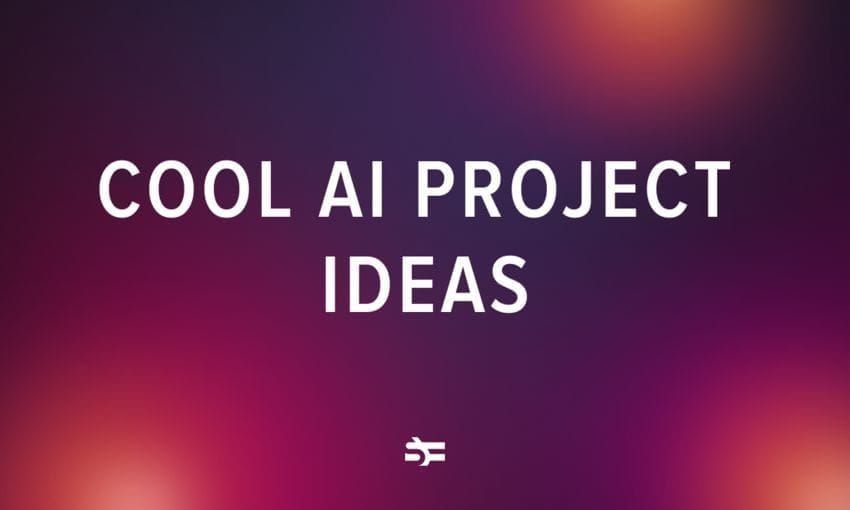Machine learning becomes more accessible to companies and individuals when there is less coding involved. If you are just starting your path in ML, feel free to check out these low-code and no-code platforms.
What is the difference between low-code and no-code?
You have probably heard the terms ‘low-code’ and ‘no-code’ before.
Low-code simply stands for a reduced amount of coding. A lot of elements can be simply dragged and dropped from the library. However, it is also possible to customize them by writing your own code, which gives increased flexibility.
.jpg)
No-code platforms require no knowledge of programming at all. They can be used by different people like artists, teachers, top managers. They need AI in their work but don’t want to dive deep into programming and computer science. No-code solutions are quite limited in functionality but allow you to build something simple quickly.
In practice, the border between no-code and low-code platforms is pretty thin. Platforms that promote themselves as ‘no-code’ still usually leave some space for customization.
Low-code platforms for beginners
.jpg)
Low-code libraries can be used even with minimal experience in coding.
PyCaret
This is an open-source machine learning library in Python that allows you to create and deploy machine learning models with minimal coding.
Basically, PyCaret is a low-code alternative that can replace hundreds of lines of code with just a few words. It greatly increases the speed of software development and makes it more accessible for beginners. PyCaret is a Python wrapper over several machine learning libraries such as scikit-learn, XGBoost, Microsoft LightGBM, spaCy, and many more.
Auto-ViML
AutoViML is a tool that enables anyone to build a machine learning model fast. It automatically renders your data through different machine learning models in order to discover which one gives the best results in each particular case. Another great plus is that you don’t have to preprocess your data; AutoViML automatically cleans, transforms, and normalizes it. The program works with different types of variables, including textual, numeral, and visual data.
H2O AutoML
H2O is an open-source machine learning platform. It has tools for deploying most widely used machine learning algorithms such as gradient descent, linear regression, deep artificial neural networks, and others. What this platform is famous for is its cutting-edge AutoML. This feature provides for automating the process of building multiple models at once so you can create and test functional ML models even without prior experience.
No-code ML platforms you should use in 2021
.jpg)
Here is an assortment of no-code platforms that you can explore if you want to quickly deploy a machine learning element and integrate it with your existing software.
Google Cloud Auto ML
This no-code tool enables anyone to train and deploy custom machine learning models without any ML expertise. The platform works with different types of data and covers a broad range of use cases from computer vision and video intelligence to natural language processing and translation. You will be able to prepare and store your datasets and use automatic tools for facilitated labeling. If you need more power and more flexible tools, you can upgrade to use Google Cloud.
Google ML Kit
This toolkit was made for Android and iOS developers who want to make their apps more engaging. Its API can be used to implement bar scanning, face detection, image labeling features, and more without having to create an ML model from scratch. All the necessary processing happens on the mobile device of the user in real-time so there is no need for you to worry about setting up and hosting expensive servers.
Teachable Machine
Teachable Machine is another project by Google that facilitates the use of ML for apps and websites. This platform is easy to use even for non-tech-savvy people due to its user-friendly interface. The program works with images and allows you to train the machine to recognize and classify photos. It also processes sounds. The platform is interesting to play with if you’re a newbie and it’s also free. But it is up to you to collect and prepare the data that you will use for training the model.
Runway AI
Runway AI was built for creators with no programming experience in the domains of video and photo editing with the green screen option, filtering, and other interesting features. This toolkit can help you expand your creativity with technological tools in a few simple clicks, turning your videos into top-notch cinema art.
Lobe
This ML platform has project templates that are easy to use even for your first ML project. The project is relatively new, so only image classification is available right now. In the future, its creators also want to launch object detection and data classification templates. However, an image classifier is one of the most useful tools for retailers, advertisers, and business professionals, so be sure to check it out.
Obviously AI
If you are looking for a convenient tool for making predictions based on data without writing code, Obviously AI is for you. It can be used by marketers and business owners who want to forecast revenue flow, optimize business processes, build a more effective supply chain, and conduct personalized automated marketing campaigns. All you need is to provide data, pick a column based on which your custom ML algorithm would be created, and get your report.
CreateML
CreateML is a user-friendly drag-and-drop platform by Apple that allows you to train models on your Mac device. It can help you build classifiers and recommender systems. The tool can process images, videos, photos, tabular data, and texts. The model you get can be tested and deployed in IOS applications. You can preview the model’s performance and pause, save, resume, and extend your training process whenever you like. CreateML allows you to train multiple models on different datasets at once for a single project. It has standard Apple SDK and documentation that includes code samples and explanatory articles.
MakeML
MakeML enables iOS developers to implement object segmentation and object detection solutions. Using this tool, you can outline and edit elements not only in photos but also in videos. Create your own datasets, build custom ML models in a few clicks, and integrate your model into your app. This platform also allows you to work with AR.
Fritz AI
If you are looking for more exciting solutions for iOS and Android apps, you can also check out Fritz AI. It gives you flexibility in how much you want to be invested in ML model development ― you can train custom models in the Studio or use pre-trained models. In the program, you can create or import your own datasets, monitor the model’s performance, and re-train it. If you do Snapchat lens development, this tool will help you add no-code machine learning to your augmented reality filters.
SuperAnnotate
Making annotations to videos and texts is a tedious job, but it can be automated with SuperAnnotate. The solution covers a multitude of cases across different industries such as aerial photography, autonomous driving, robotics, and medicine. If you quickly need to process images and you don’t want to hire a whole team of data scientists, we recommend checking it out.
Rapid Miner
RapidMiner is a tool created for data mining. It is based on the idea that business analysts or data analytics don’t necessarily have to program to do their job. At the same time, mining requires data, so the tool was equipped with a good set of operators solving a wide range of tasks for obtaining and processing information from various sources (databases, files). Overall, this tool makes data analytics simple enough for anyone to use it.
What-If Tool
This is a super useful tool to assess the performance of the models without coding. WIT visually displays how model behavior changes over time and over different subsets of data. You can also compare the performance of two models to see which one works best.
DataRobot
DataRobot is a platform that enables business analysts to build predictive analytics without knowledge of machine learning or programming. The platform uses automated machine learning (AutoML) to generate accurate predictive models in a short amount of time. DataRobot provides a user-friendly user interface for creating machine learning models. In just a few steps, a company can deploy a real-time predictive analytics service.
Nanonets AI
Intelligent document processing is possible with Nanonets. It captures data from documents automatically, saving you from hours of manual document management. Nanonets AI processes unseen, semi-structured documents even if they don’t follow a standard template, automatically validates data, and improves over time through multiple usages.
Monkey Learn Studio
MonkeyLearn Studio provides tools for working with textual data and is aimed at being used by companies. This platform can automatically tag business data, for example, support tickets or emails. It also helps with the visualization of data. Monkey Learn makes it easy to work with machine learning because it has ready-made machine learning models that can be trained and built code-free.
Final words
These tools are cool for what they are: no-code platforms for quick deployment of simple projects by non-tech experts or newbies in ML. By no means can they substitute custom ML model development for high-load, data-intensive projects. So if you have a unique idea in mind that involves the processing of big data, automation of intensive industrial processes, or sensitive prediction models, contact us. Together, we can think of solutions that will fit your particular needs.





.jpg)
.jpg)
.jpg)
.jpg)